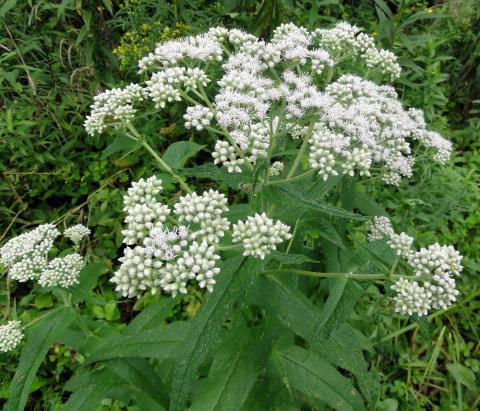
By Rob Croll, GLIFWC Climate Change Program Coordinator
When Cherie Hagen, Lake Superior Unit Manager in the Wisconsin Department of Natural Resources Office of Great Waters, heard Lake Superior National Estuarine Research Reserve (LSNERR) and GLIFWC staff share a presentation on Ganawenindiwag: Working with plant relatives to heal and protect Gichigami shorelines at the 2024 St. Louis River Summit she was excited about this new resource and started thinking about how her team could incorporate it’s teachings into their work. Created by a diverse author team from GLIFWC, LSNERR, the Lake Superior Research Institute, and University of Wisconsin-Madison Extension, and guided by a group of elders and knowledge holders from Mashkiiziibii, Gaa-miskwaabekaang, and Nagaajiwanaang,
Ganawenindiwag (They take care of each other) empowers users to grow, promote, and use plant beings specifically from natural plant communities adapted to coastal areas of Gichigami (Lake Superior) to heal and protect Gichigami shorelines. From its inception, the intent of this guide was to blend different ways of knowing and share about plants in a way that intentionally elevates the knowledge and guidance of indigenous communities. “We had the perfect restoration to reference Ganawenindiwag, the Town of Port Wing’s Michele Wheeler Wetland Restoration,” said Hagen. “We selected the plants and seed for this site with a focus on those culturally important plant relatives that were not growing on the site yet, such as sweetgrass.”
Aazhaabaakesing, niiyaawibagak, (boneset). The seeds, nectar, and vegetation of boneset are food sources for wildlife. This plant supports pollinating honeybees, native bees, beetles, butterflies and f lies. (Superior National Forest, CC BY 2.0 photo) Hagen and her staff planted plugs early in June and will be seeding in the fall. In addition to wiingashk (sweetgrass) Hagen’s team planted zhaawashkoons (blue vervain), wiikenh (sweet flag), aazhaabaakesing (boneset), and bagizown (Joe Pye weed). Ganawenindiwag profiles 97 different shoreline and wetland plants and the native plant communities in which they live. Plant profiles contain Ojibwe, common, and latin names, known human relationships with the plant, and physical characteristics that determine suitability for shoreline restoration.
Other sections of the guide are designed to inspire readers to think about plants and stewardship from an Ojibwe perspective. Although Ganawenindiwag has only been available since late 2023, other tribal and non-tribal entities are already using it for shoreline restoration in the Ceded Territories and beyond. For example, Nagaajiwanaang and LSNERR staff are using it for restoration work in the St. Louis Estuary, the US Fish & Wildlife Service (USFWS) used it for selecting plants for a small restoration project on the Lake Michigan shoreline in Racine, Wis. and USFWS, the Superior Rivers Watershed Conservancy, and partners are planning to use it in a demonstration project on Fish Creek Slough in Ashland, Wis. Copies of the guidebook recently made it as far as Chickasaw Country in Oklahoma, inspiring Chickasaw Nation staff to contemplate creating a similar resource for their communities. To download a copy of Ganawenindiwag visit glifwc.org/climatechange/ganawenindiwa